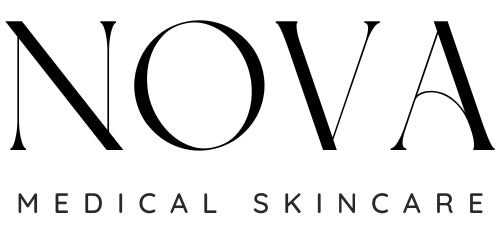Intense Pulse Light (IPL) is a versatile, non-invasive treatment that uses high-intensity pulses of light to target various skin concerns. The broad spectrum of light energy penetrates the skin's surface to treat pigmentation irregularities, reduce redness, and improve skin tone and texture. IPL is highly effective in addressing sun damage, age spots, freckles, rosacea, and broken capillaries, while also reducing fine lines and promoting overall skin rejuvenation. By stimulating collagen production, IPL helps the skin become smoother, firmer, and more youthful-looking. The treatment is quick, with minimal discomfort and little to no downtime, making it an excellent option for busy individuals seeking significant skin improvements without invasive procedures. IPL is often most effective when used in combination with other treatments, such as the Revlite Laser, for enhanced results. Ask us about our current laser specials to learn more about how IPL and Revlite can work together to bring out the best in your skin.
FAQ
1. What is Intense Pulse Light (IPL) Treatment?
Intense Pulse Light (IPL) treatment is a non-invasive, non-laser technology that uses high-intensity pulses of light to target a variety of skin concerns. It can treat pigmentation issues, sun damage, age spots, rosacea, redness, and fine lines, as well as improve overall skin tone and texture by stimulating collagen production.
2. How does IPL work?
IPL works by emitting broad-spectrum light that is absorbed by targeted areas of the skin. The light energy penetrates the skin’s surface, where it targets specific pigments and blood vessels, breaking down unwanted pigmentation and improving skin tone. IPL also stimulates collagen production, helping to reduce fine lines and promote smoother, firmer skin.
3. What skin concerns can IPL treat?
IPL is effective for treating a variety of skin concerns, including:
Sun damage and age spots
Hyperpigmentation (e.g., freckles, melasma)
Rosacea and redness
Broken capillaries and spider veins
Fine lines and wrinkles
Uneven skin tone and texture
4. Is IPL treatment safe?
Yes, IPL is a safe and FDA-approved treatment when performed by a trained and experienced professional. It is non-invasive and targets only the deeper layers of the skin without damaging the outer layer, making it a safe option for most people.
5. Does IPL treatment hurt?
Most patients experience minimal discomfort during an IPL treatment. The sensation is often described as a mild snapping or tingling feeling on the skin, similar to the sensation of a rubber band being snapped. Topical numbing cream can be applied to ensure your comfort during the procedure.
6. How long does an IPL treatment take?
An IPL treatment typically takes between 20 to 30 minutes, depending on the area being treated. It is a relatively quick procedure, allowing you to return to your daily activities shortly after the treatment.
7. How many IPL treatments will I need?
The number of treatments needed depends on your specific skin concerns and goals. For optimal results, most patients require 3-5 treatments spaced about 3-4 weeks apart. Your provider will recommend a personalized treatment plan based on your skin’s needs.
8. When will I see results from IPL?
Results from IPL treatment are gradual. You may begin to notice improvement in your skin tone and texture within a few days after your first treatment, but optimal results typically take 2-3 weeks to fully develop. Over time, the skin will continue to improve as collagen is produced and pigmentation fades.
9. Is there any downtime after IPL treatment?
One of the key benefits of IPL is that it requires little to no downtime. After the treatment, you may experience mild redness or swelling in the treated areas, which usually subsides within a few hours. Some patients may also experience temporary darkening of pigmentation, which will gradually flake off over the next 1-2 weeks. You can return to your normal activities immediately following the treatment.
10. Are there any side effects with IPL treatment?
Side effects from IPL are generally rare and mild. Some patients may experience temporary redness, swelling, or slight tenderness at the treatment site. In some cases, the treated pigmentation may temporarily darken before it fades. Serious side effects are rare when the treatment is performed by a trained professional.
11. Can IPL be used on all skin types?
IPL is suitable for most skin types, but it is most effective on lighter skin tones with darker pigmentation or redness. For darker skin tones, IPL may not be as effective and can carry a slightly higher risk of hyperpigmentation or hypopigmentation. During your consultation, your provider will assess your skin type and recommend the best approach for you.
12. How should I prepare for an IPL treatment?
Before your IPL treatment, it’s important to avoid sun exposure for at least 2 weeks, as tanned or sunburned skin can increase the risk of side effects. You should also refrain from using any products that may irritate your skin, such as retinoids or exfoliants, for a few days before your treatment. Your provider will give you specific pre-treatment instructions to ensure the best results.
13. How much does IPL treatment cost?
The cost of an IPL treatment varies depending on the areas being treated and the number of sessions required. During your consultation, your provider will assess your skin concerns and develop a personalized treatment plan, including a cost estimate.
14. Can IPL be combined with other treatments?
Yes, IPL is often used in combination with other treatments for enhanced results. For example, IPL combined with Revlite Laser is a powerful pairing that can improve skin texture, reduce pigmentation, and stimulate collagen production for a more youthful, radiant complexion. Ask us about our current laser specials to learn more about how these treatments can work together to provide optimal results.
Please contact us if you have any other questions regarding this treatment and we are happy to assist.
